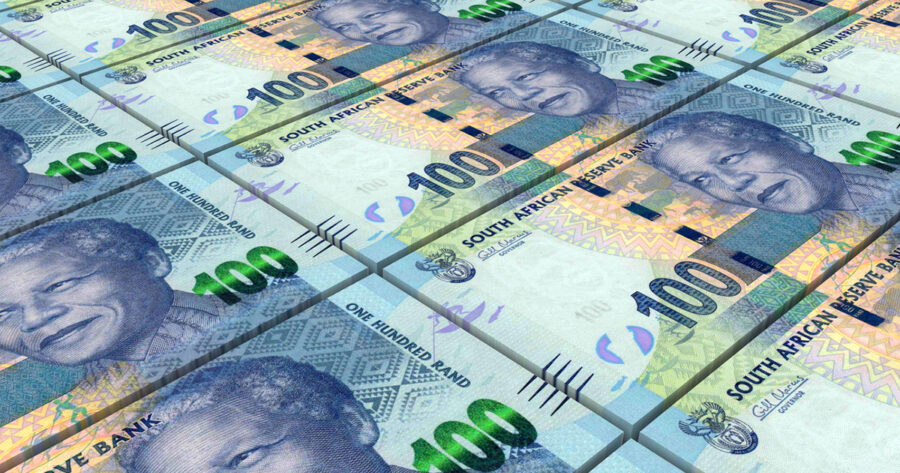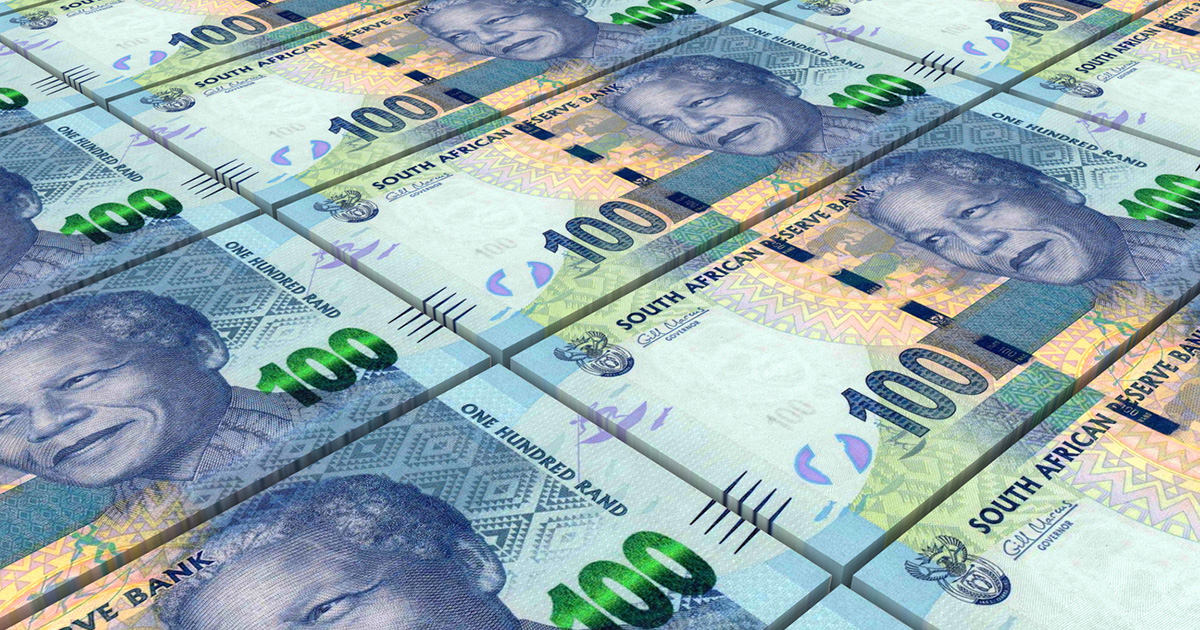
South African rand strengthened ahead of mid-term budget
The South African rand strengthened on Monday at the start of a data-heavy week that includes the government’s midterm budget statement.

Reuters: The South African rand strengthened on Monday at the start of a data-heavy week that includes the government’s midterm budget statement.
SOUTH AFRICAN RAND STRENGTHENED
At 1505 GMT, the rand traded at 18.8000 against the dollar, more than 0.3% stronger than its previous close. Meanwhile, the dollar last traded down 0.4% against a basket of global currencies. South Africa’s finance minister Enoch Godongwana will on Wednesday table in parliament the medium-term budget policy statement, which updates economic forecasts, adjusts the budget and makes emergency changes to spending.
ALSO READ: Rea Vaya abruptly suspends service of almost 10 buses
The South African rand appreciated in recent days is surprising given that Godongwana will likely highlight the deterioration of South Africa’s fiscal position, analysts at ETM said. The currency could be drawing strength from more hawkish talk from the South African Reserve Bank, which has left the prospect of another rate hike on the table, they said. “The broader picture remains worrisome, with all eyes turning to the MTBPS to determine if the government has the appetite to implement urgently needed structural reforms,” ETM Analytics said in a research note.
Central bank data on Monday showed that South Africa’s credit growth had risen to 4.60% in September from 4.39% in August, and that M3 money supply growth was at 7.67% in September, down from 8.53% the previous month. National Treasury figures showed the country recorded a budget deficit of 14.59 billion rand ($774.84 million) in September, compared to a deficit of 3.29 billion rand in the same month a year earlier. Shares on the Johannesburg Stock Exchange rose, with the blue-chip Top-40 index closing over 0.7% higher. South Africa’s benchmark 2030 government bond fell, the yield up 5.5 basis points at 10.715%.
ALSO READ: How much you will pay for petrol and diesel at the COAST from Wednesday
U.S. DOLLAR
Reuters: The Japanese yen climbed to a two-week peak against the dollar on Monday after a report said the Bank of Japan is considering tweaking its yield curve control policy to allow the 10-year Japanese government bond yield to rise above 1% when it concludes its meeting on Tuesday. The Nikkei report pushed the yen to 148.81 per dollar, its strongest level since Oct. 17. The greenback, which has been on the defensive all day, was last down 0.4% at 149.065 yen. Surging global rates have heightened pressure on the BOJ, which kicked off its two-day monetary policy meeting on Monday, to change its bond yield control policy, in which it maintains a -0.1% short-term interest rate target and a 0% cap on the 10-year bond yield.
ALSO READ: Could the South African Rand hit R25 to the dollar?
“If the BOJ does not do anything tomorrow, which I think that’s what economists expect, and just wait until December, I think the dollar jumps right back versus the yen,” said Marc Chandler, chief market strategist at Bannockburn Global Forex in New York. But with Monday’s action, Chandler thinks Japanese intervention seems unlikely, although he noted that in the last few weeks the BOJ has intervened in the bond market as an alternative. “The key to intervention is excessive volatility and the BOJ has been saying this: that it’s not targeting a particular level. So that’s taking the magic away from the 150 mark,” he said.
Aside from the BOJ, market participants are looking ahead to interest rate decisions from the U.S. Federal Reserve and the Bank of England. A slew of purchasing managers’ surveys, euro zone inflation and GDP data, and U.S. nonfarm payrolls are also due for release this week. “If consumer data domestically hadn’t been so strong last week, we’d probably be looking at a bigger slide for the dollar, but markets are still finding it quite difficult to discount the resilience of the U.S. economy,” said Helen Given, FX trader at Monex USA in Washington.
ALSO READ: Who is the richest person in the world today? Top 10 list – 31 October 2023
Analysts also pointed to the U.S. Treasury’s quarterly refunding announcement on Wednesday that could move both the bond and currency markets. That comes as mounting deficits and a heavier interest rate burden have substantially increased the U.S. Treasury’s funding needs. Since the last announcement in August, borrowing rates have spiraled to their highest since 2006-07. The dollar index was last down 0.4% at 106.11, after earlier falling to a one-week low of 106.06, hurt by a pickup in the euro . The euro was last up 0.5% at $1.0615.
The U.S. Treasury on Monday announced borrowing estimates of $776 billion for the fourth quarter, lower than the $852 billion forecast announced on July 31, due to expectations of higher receipts. The greenback slightly extended losses after the announcement. Later this week, the Fed and BoE are both expected to keep rates steady so, barring any surprises, the focus will be on the message from policymakers. The pound was up 0.4% at $1.2164. U.S. nonfarm payrolls data on Friday will also be important for expectations of the Fed’s rate hike path. Wall Street economists are expecting new U.S. jobs of 188,000 for the month of October, according to a Reuters poll.
ALSO READ: BIG CHANGES to Johannesburg LOAD SHEDDING schedule
BRITISH POUND
Reuters: Sterling was broadly flat against the dollar and euro on Monday as traders looked ahead to a Bank of England meeting on Thursday where rates are expected to be held and the outlook is likely to be more in focus after a run of weak UK economic data. The British pound has largely been on the back foot in currency markets in recent weeks as risk appetite has faded, weighed by jitters in the stock market and war in the Middle East. Currency analysts have said that deteriorating UK economic indicators – including jobs data last week that showed the labour market has lost some of its inflationary heat – have underscored market bets on the BoE holding rates.
BoE data on Monday showed British lenders in September approved the lowest number of home loans since January, adding to signs of a sluggish property market. Sterling was last trading flat on the dollar at $1.21250 and down 0.1% on the euro at 87.25 pence. Currency analysts at MUFG said in a note that the BoE was likely at the peak of its rate tightening cycle and that the key would now be “communication in terms of assessing the prospects of a pivot toward a more dovish stance over coming meetings”. “We are likely some distance from that for the BoE but certainly most of the data released since the last meeting in September has pointed to weak economic activity,” they added.
“That may well mean the growth projections in the Monetary Policy Report could show a downgrade from the forecasts in August,” the analysts said. The yield on two-year British government bonds fell to its lowest since mid-June in early trade on Monday as investors further scaled back bets on BoE rate rises. Markets were putting just a 6% chance of the BoE raising the rate on Thursday. The vast majority of economists polled by Reuters this month said the BoE would leave rates at 5.25%.
ALSO READ: Newspaper front pages from around the world, 31 October 2023
GLOBAL MARKETS
Reuters: Asian equities slipped on Tuesday, hovering close to a near one-year low, as manufacturing activity data from China disappointed while the yen weakened past 150 per dollar after the Bank of Japan tweaked its bond yield control policy. The yen fell 0.7% against the dollar to touch a session low of 150.12 after the central bank maintained its target for the 10-year government bond yield around 0% set under its yield curve control but redefined 1.0% as a loose “upper bound” rather than a rigid cap. Under criticism that its heavy defence of the cap is causing market distortions and an unwelcome yen fall, BOJ had raised its de-facto ceiling for the yield to 1.0% from 0.5% in July.
Saxo market strategist Charu Chanana said the new reference range suggests the BOJ will allow yields to rise above 1%, while still trying to keep the changes to policy very subdued. “Speculation of an eventual removal of YCC will continue to build last week proved that dollar/yen at 150 is not a line in the sand, and this could bring a test of 152,” Chanana said. The 10-year JGB had yet to trade following the announcement. The yield jumped 6.5 basis points earlier in the day to 0.955%, its highest since May 2013.
A report from the Nikkei newspaper on Monday that said BOJ is considering adjusting its yield curve control policy helped push the yen to a two-week peak of 148.81 per dollar but the fragile currency gave up all its gains after the BOJ decision. The central bank, which maintained its ultra-loose monetary policy, also removed a pledge to defend the 1% level with offers to buy unlimited amount of bonds. “The BOJ will buy some bonds around that 1% level but not unlimited and they’ve shown their hand,” said Tom Nash, portfolio manager at UBS Asset Management in Sydney. “Through all the linguistic contortions, the fact is that they are dismantling YCC. A yield cap isn’t a yield cap if you change it every time the market gets close.”
ALSO READ: President Cyril Ramaphosa: KEY takeaways from Nation Address
Stocks in Asia fell, with MSCI’s broadest index of Asia-Pacific shares outside Japan 0.86% lower, hovering close to the one-year low it touched last week. The Shanghai Composite Index was 0.38% lower, while Hong Kong’s Hang Seng Index fell 1.77% after China’s manufacturing activity unexpectedly returned to contraction in October, an official factory survey showed on Tuesday. The data cast a cloud over recent indicators that showed a nascent recovery in the world’s second-largest economy.
Investor focus this week will mainly be on the major central bank meetings, with the U.S. Federal Reserve and Bank of England also due to meet along with BOJ. On Tuesday, the Federal Open Markets Committee will convene for a two-day monetary policy meeting, which is expected to culminate in a decision to let the Fed funds target rate stand at 5.25%-5.50%. A slew of recent data showed the U.S. economy remains resilient and comments from Fed Chair Jerome Powell will be scrutinized to gauge how long interest rates are likely to stay elevated.
The Treasury Department said on Monday it expects to borrow $76 billion less this quarter than anticipated in the third quarter on expectations of higher revenue receipts. The yield on 10-year Treasury notes was flat at 4.875%. The dollar index, which measures U.S. currency against six rivals, rose 0.226%. Sterling was last trading at $1.2145, down 0.18% on the day, while the euro was down 0.2% at $1.0594. U.S. crude rose 0.36% to $82.61 per barrel and Brent was at $87.81, up 0.41% on the day. Gold prices were flat after slipping below the $2,000/ounce milestone in the last session. Spot gold eased 0.2% to $1,991.39.
ALSO READ: Who are the richest South Africans in the world today? – 30 October 2023
Published by the Mercury Team on 31 October 2023
For more news on global and local market performance, follow our business and finance page.
